-
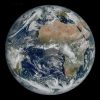 +21 +1
+21 +1Stunning Photo of Earth Taken by Europe's Powerful New Satellite
The European Space Agency (ESA) has released a stunning photo of Earth from its latest satellite imager that captures weather conditions in never-before-seen detail.
-
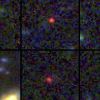 +2 +1
+2 +1James Webb Telescope discovers six massive 'universe breaker' galaxies
Astronomers have detected what appear to be six massive and very ancient galaxies, a discovery they say could upend our understanding of how galaxies formed at the very beginning of the universe. While the new James Webb Space Telescope has already spotted even older galaxies, it’s the size and maturity of these six apparent mega-galaxies that have stunned scientists.
-
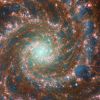 +14 +1
+14 +1The best space photos of 2022
In 2022, space missions provided entirely new way of looking at the cosmos, from the celestial backyard of our solar system to incredibly distant galaxies that were created shortly after the big bang.
-
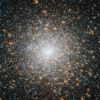 +19 +1
+19 +1Andromeda Contains the Remnants of a Recent "Feeding Event"
There’s a growing body of evidence that galaxies grow large by merging with other galaxies. Telescopes like the Hubble have captured dozens of interacting galaxies, including well-known ones like Arp 248. The Andromeda galaxy is the nearest large galaxy to the Milky Way, and a new study shows that our neighbour has consumed other galaxies in two distinct epochs.
-
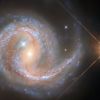 +29 +1
+29 +1Milky Way stars photobomb picturesque spiral galaxy in stunning Hubble photo
This galaxy is located 300 million light-years away, but the star to the right is much closer to Earth.
-
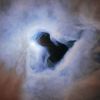 +11 +1
+11 +1Hubble Found an Eerie 'Cosmic Keyhole' Deep in Space And We're in Awe
When it comes to dramatic and awe-inspiring pictures of space, few can contend with what appears to be a pic of, well, nothing at all: a fascinating image of what seems to be a hole in the fabric of space, taken by the NASA/ESA Hubble Space Telescope.
-
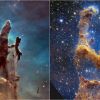 +22 +1
+22 +1Webb Telescope Shows the Pillars of Creation Like You’ve Never Seen Them Before
The famous clouds of gas and dust are dazzling in the state-of-the-art instrument’s eye.
-
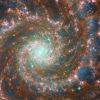 +21 +1
+21 +1NASA releases stunning new image of the Phantom Galaxy
Stunning new images produced by the Hubble Telescope and the James Webb Telescope showcase the Phantom Galaxy, a spiral of solar systems 32 million light-years away from Earth.
-
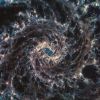 +20 +1
+20 +1You've seen some spectacular James Webb telescope images — but you haven't seen this one
The adolescent phase of the universe was much more complex than imagined, detailed snapshots of the early cosmos from the James Webb Space Telescope (JWST) reveal. "There are many more galaxies with obvious disks, bulges, spiral arms … appearing earlier in cosmic time than we thought," Karl Glazebrook says.
-
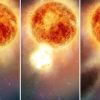 +12 +1
+12 +1Scientists left stumped after massive never-before-seen eruption rips through star
The red supergiant Betelgeuse, a colossal star in the Orion constellation, experienced a massive stellar eruption - the likes of which have never been seen before, according to astronomers. Betelgeuse first drew attention in late 2019 when the star, which glitters like a red gem in the upper-right shoulder of Orion, experienced an unexpected darkening. The supergiant continued to grow dim in 2020.
-
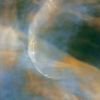 +20 +1
+20 +1Hubble's Closeup of The Orion Nebula Looks Like a Surreal Dreamscape
One of the most beautiful and spectacular regions of the night sky can be found in the constellation of Orion.
-
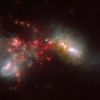 +26 +1
+26 +1JWST has caught two galaxies smashing together and sparking starbursts
The James Webb Space Telescope (JWST) has caught two galaxies colliding. In the midst of this cosmic clash, researchers have found something unexpected – there doesn’t seem to be an active supermassive black hole in either galaxy. The pair of galaxies, called IC 1623 or VV 114, is about 275 million light years away in the direction of the constellation Cetus. Lee Armus at the California Institute of Technology and his colleagues observed them with JWST as part of a campaign to spot four relatively nearby, bright galaxy mergers and figure out how they work.
-
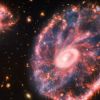 +15 +1
+15 +1James Webb Space Telescope captures stunning image of Cartwheel Galaxy
A stunning image captured by the James Webb Space Telescope has given us the clearest look of the Cartwheel Galaxy so far. NASA released the image Tuesday of the distant galaxy — named for its resemblance to a wagon wheel. The Cartwheel Galaxy is located about 500 million light-years away in the Sculptor constellation, the agency said in a press release.
-
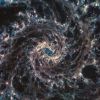 +15 +1
+15 +1James Webb Space Telescope's stunning 'Phantom Galaxy' picture looks like a wormhole
A fresh image based on brand-new deep-space data appears to show a wormhole spinning before our very eyes. The appropriately named "Phantom Galaxy" glows eerily in a new image by Judy Schmidt based on James Webb Space Telescope data collected nearly a million miles away from our planet using the observatory's mid-infrared instrument (MIRI).
-
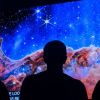 +4 +1
+4 +1The James Webb Space Telescope's Next Targets Are Potentially Mind-Blowing
Astronomers are getting their hands on JWST data and here's what you can expect to see in the near future.
-
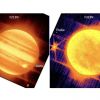 +23 +1
+23 +1James Webb Space Telescope team quietly releases a picture of Jupiter
On top of the first high-resolution science images that NASA’s James Webb Space Telescope team has just released, there was also a picture of Jupiter hidden in a document about telescope testing
-
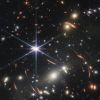 +25 +1
+25 +1The Webb telescope's first full-color photo is here — and it's stunning
Dubbed “Webb’s First Deep Field,” it is the first full-color image from the $10 billion observatory that launched into space last year.
-
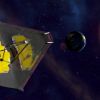 +19 +1
+19 +1NASA unveils list of 1st targets for James Webb Space Telescope
These first targets offer a sneak peek at Webb's capabilities.
-
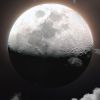 +16 +1
+16 +1Teen Photographer Captures Incredible Moon Photo with His Phone
No expensive camera equipment used.
-
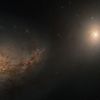 +13 +1
+13 +1Hubble telescope sees haunting galactic dance of 2 galaxies linked by the corpse of a cannibalized neighbor
Two galaxies are intertwined in a turbulent gravitational dance in a stunning new view from the Hubble Space Telescope. The pair includes the large spiral galaxy NGC 3227 and the elliptical galaxy NGC 3226. The galaxies, collectively known as Arp 94, reside relatively close to Earth, between 50 million and 60 million light-years away, near the constellation Leo.
Submit a link
Start a discussion




















